Premium Only Content

Posse Comitatus Act of 1878 Was Never Enforced
Cause Before Symptom - With Your Host James Carner
Posse Comitatus Act of 1878 Was Never Enforced
I saw a TikTok video where a gentlemen read some polcies of the DOD that were signed recently and he believes it gives the military rights to fire upon citizens. He claimed it gives the secretary of defence, along with approval by the President for the military to have legal rights to fire upon citizens and told his audience, meaning ex-military, to remember their oaths.
I looked it up and read it myself. DoDD 5240.01, signed September 27, 2024 under section 3.3.a.(c) it reads:
Assistance in responding with assets with potential for lethality, or any situation in which it is reasonably foreseeable that providing the requested assistance may involve the use of force that is likely to result in lethal force, including death or serious bodily injury. It also includes all support to civilian law enforcement officials in situations where a confrontation between civilian law enforcement and civilian individuals or groups is reasonably anticipated.
Such use of force must be in accordance with DoDD 5210.56, potentially as further restricted based on the specifics of the requested support.
The Department of Defense Directive 5240.01, as referenced, outlines policies and responsibilities for the conduct of intelligence activities within the U.S. by the Department of Defense (DoD). It includes protections to ensure intelligence activities are lawful, protecting the rights of U.S. citizens. There is no language explicitly stating that the military can fire upon American citizens. The directive primarily focuses on intelligence collection, counterintelligence, and protections against unlawful surveillance. For detailed specifics, you can refer to the full document here.
So basically, this is for intelligence protection. This means, if a US spy or safehouse has been compromised by whatever entity and it requires the help of the military, they will work with local law enforcement and if an enemy comes into play, they will have to call the secretary of defence and the President for authorization to fire upon a citizen who is holding intelligence that could be used against the US.
The U.S. military is generally prohibited from conducting law enforcement activities, including firing on U.S. citizens, under the Posse Comitatus Act (1878). This law limits military involvement in domestic affairs. However, there are rare exceptions under federal law, such as when authorized by Congress, in cases of rebellion, or under the Insurrection Act. Even in such instances, strict guidelines are in place to protect constitutional rights. These circumstances are highly exceptional and regulated by legal oversight.
The Posse Comitatus Act of 1878 is a United States federal law that limits the powers of the federal government in using the military for law enforcement purposes. The Act was passed in response to the use of federal troops in the South during Reconstruction to enforce civil rights and maintain order.
Key Points of the Posse Comitatus Act:
1. Prohibition of Military Enforcement: The Act prohibits the use of the Army and Air Force to execute domestic laws unless explicitly authorized by the Constitution or an act of Congress.
2. Limited Scope: The Act primarily applies to the Army and Air Force, but similar principles have been applied to the Navy and Marine Corps through various regulations and policies.
3. Historical Context: The law was enacted to prevent the federal government from using the military as a domestic police force, which was a concern following the Civil War and during the Reconstruction era.
4. Exceptions: There are exceptions where the military can be used in domestic situations, such as:
* When specifically authorized by Congress.
* In emergencies, such as natural disasters or civil unrest, where local law enforcement is overwhelmed.
5. Modern Implications: The Act has been the basis for legal arguments regarding the limits of military involvement in domestic affairs, particularly in instances of protests and civil unrest.
The Posse Comitatus Act remains a significant piece of legislation in discussions about civil liberties, military authority, and law enforcement in the United States.
However, the above act never stopped the government from firing upon us anyways. I have researched 117 events where the military or national guard were called in and have been authorized to fire upon us. In 20 cases under 8 Presidents, they did. Were they held accountable? No.
Now, let’s look at some common sense here. If there is an act of war on the united states whether foreign or domestic, even in an emergency like a meteor or earthquake or whatever, the military isn’t going to just start firing at civilians. They need orders to do it. The political heads armed with those above them can do pretty much whatever they want. As long as the President approves, they can shoot to kill, regardless of the Posse Comitatus Act.
Here is an exhaustive list of 117 events that have occured in the United States of America where the National Guard Army Reserve was ordered to intervene in State issues.
- [ ] New Orleans (1807): In New Orleans during the War of 1812, martial law was declared by General Andrew Jackson. Federal troops detained and controlled civilians, but there is no significant record of the military firing upon citizens. Jackson's decision to suspend habeas corpus and hold civilians in custody was highly controversial, but the direct violence against civilians by military forces was limited, with few accounts of lethal action.
Then President Abraham Lincoln comes in fists a blazin
- [ ] The New York Draft Riots (1863): Yes, during the New York Draft Riots of 1863, federal troops did fire upon citizens. The riots were violent protests against the Civil War draft, which disproportionately affected the working class, especially Irish immigrants. After days of chaos, the military was deployed to restore order. In the ensuing clashes, the troops opened fire on rioters, resulting in over 100 deaths. The violence from both sides was severe, making the Draft Riots one of the bloodiest domestic disturbances in U.S. history.
The 1876 Centennial Exposition Riots: The military did not fire upon citizens. The riots were triggered by tensions over race and labor issues during the celebration of America's 100th anniversary. While there were violent clashes between different groups, including police and militia involvement, the military's role was primarily to restore order rather than engage in direct confrontation with citizens. The violence was mostly between civilians and local law enforcement.
Then Rutherford B. Hayes comes in guns totin
- [ ] The Railroad Strike of 1877: Federal troops were deployed to suppress labor unrest, resulting in violent clashes with workers in several states, including Maryland and Pennsylvania. Yes, during the Railroad Strike of 1877, federal troops did fire upon citizens. The strike was marked by violent confrontations between workers and law enforcement. In some instances, troops opened fire on striking workers, resulting in deaths and injuries. This marked one of the first major instances of military intervention in labor disputes in the United States, reflecting the tensions between labor movements and government authority during that period.
The Haymarket Affair (1886): Although it involved state militias, the response to labor protests resulted in violence and deaths during a workers' rights demonstration in Chicago, there was no direct military firing on citizens. However, the event involved significant violence, including a bombing that killed police officers, which led to a brutal police crackdown on the labor movement. The police responded with violence during the protests, and several people were killed in the subsequent riots. While state militias were involved, the military did not fire upon the demonstrators. The incident significantly impacted labor rights and the perception of labor movements in America.
Grover Cleveland is elected and blam!
- [ ] The Pullman Strike (1894): Federal troops intervened in a nationwide railroad strike. While most violence was inflicted by strikers and police, the military’s presence was controversial. During the strike federal troops were deployed to break the strike and restore order. The military's intervention led to violent clashes between strikers and troops, with soldiers firing on strikers in some instances, resulting in deaths. This use of military force against labor protests was controversial and heightened tensions between labor unions and the government. The strike ended with significant losses for the workers and further repression of labor movements.
Coxey's Army (1894): Protesters marched to Washington D.C. demanding economic reforms. Federal forces confronted the protesters. While there was a standoff and some skirmishes, the military did not fire upon the protesters. Instead, police and military units arrested several leaders and dispersed the marchers without lethal force. The event highlighted tensions between the government and the growing movement for economic reform during the Depression.
The 1898 Spanish-American War Protests: Activists opposed to the war faced military action, especially in areas of significant anti-war sentiment. Military action against anti-war activists, especially in regions with strong opposition to the war was permitted. However, direct reports of military firing upon citizens are less clear. While there were confrontations and tensions, the specific use of deadly force by military personnel was not as prominently documented as in other events, highlighting the complex dynamics of military involvement in civil unrest during that period.
Then President Woodrow Wilson steps up and goes apeshit
- [ ] The Colorado Coalfield War (1913-1914): Involving conflicts between striking miners and company-hired security, backed by the Colorado National Guard. The Colorado National Guard fired upon citizens. The conflict arose between striking miners and company-hired security forces. The situation escalated significantly, culminating in violent clashes, particularly during the Ludlow Massacre in April 1914, where the National Guard attacked a tent colony of striking miners, resulting in numerous deaths, including women and children. This incident highlighted the extreme measures taken by the state against labor movements during that period.
- [ ] The Ludlow Massacre (1914): During a coal miners' strike in Colorado, the Colorado National Guard was heavily involved and did fire upon citizens. The National Guard attacked a tent colony of striking coal miners, leading to the deaths of many, including women and children. This tragic event was part of a larger labor conflict and highlighted the violent responses often directed at labor movements during that era. The massacre remains a significant moment in U.S. labor history.
- [ ] The St. Louis Race Riots (1917): The National Guard intervened during violent racial clashes in St. Louis. The National Guard was deployed to restore order during violent racial clashes that erupted in the city. While the National Guard's presence aimed to quell the violence, there were instances of violence against citizens, including confrontations with local residents. The riots were part of a broader pattern of racial tension in the United States during this period.
- [ ] The 1918 Boston Police Strike: After police officers were suspended for joining a union, the National Guard was called to maintain order. They were called in to maintain order after the police force was effectively paralyzed due to the strike. While the National Guard's role was primarily to restore order, there were instances of confrontations, although they did not directly fire upon citizens. The strike highlighted tensions between labor rights and public safety, with significant implications for policing in Boston.
The Red Summer (1919): Race riots erupted in several cities; the National Guard was deployed in places like Chicago to quell violence, though there were no documented instances of them firing on citizens. they were deployed to various cities, including Chicago, to help quell violence during the race riots. However, there are no documented instances of the National Guard firing upon citizens during these events. Their presence aimed to restore order amidst widespread racial tensions and violence.
The 1919 Omaha Race Riot: The National Guard was called in to suppress violence following a lynching. While the National Guard was called in to restore order, they did fire upon citizens during the riot, resulting in several deaths and injuries. The military's response was marked by violence, as they faced hostile crowds and attempted to suppress the unrest.
The Boston Police Strike (1919): The Massachusetts National Guard replaced striking police officers to maintain order. There were no documented instances of the National Guard firing upon citizens during this event. The deployment was primarily aimed at preventing violence and unrest amid the labor dispute and public safety concerns.
The 1920 Wall Street Bombing: National Guard helped manage the aftermath of a terrorist bombing killing 30 people. However, there were no documented instances of the military firing upon citizens during this event. The National Guard's role was focused on maintaining order and assisting in the response to the bombing rather than engaging in any confrontational actions against civilians.
President Warren G. Harding gives it a shot pun intended
- [ ] The Battle of Blair Mountain (1921): The U.S. military was called to end a labor uprising of coal miners in West Virginia. The miners, who were protesting for better working conditions and union recognition, clashed with law enforcement and private security forces. The military's involvement included air support, and there were instances of violence, including firing upon miners. The battle is considered one of the largest labor uprisings in U.S. history.
The Longview Riots (1921): The National Guard was called to restore order after racial violence broke out in Longview, Texas. The National Guard's presence aimed to quell the violence, but there is no documented evidence that they fired upon citizens during this intervention. The situation highlighted racial tensions in the community and the role of the National Guard in managing civil unrest.
The 1927 Bath School Disaster: After a bomb attack in Michigan, troops were sent to maintain order during the ensuing panic. In the aftermath, troops were sent to manage the chaos and panic that ensued. However, there is no evidence that the military fired upon citizens during this incident; their role was primarily focused on maintaining order in the community.
President Herbert Hoover shoots for the sky
- [ ] The 1929 Chicago Beer Riot: National Guard troops were deployed during violent clashes over Prohibition enforcement. The National Guard's involvement was meant to restore order, but there were reports of violence, including the use of firearms. While the specifics can vary, some accounts indicate that there were confrontations where the National Guard might have fired upon citizens, contributing to the chaotic atmosphere surrounding the protests.
Then Franklin D. Roosevelt gives it a shot
- [ ] The Bonus Army Incident (1932): Veterans demanding early payment of a bonus were forcibly dispersed by the military in Washington, D.C., resulting in injuries and deaths. The U.S. Army, under General Douglas MacArthur, forcibly dispersed the protesters, using infantry and cavalry, leading to violent clashes. This resulted in injuries and several deaths, significantly affecting public opinion about the government's treatment of veterans. The incident remains a notable example of military force being used against citizens in a domestic context.
- [ ] The 1932 Harlan County War: While largely a labor dispute, the military was involved in managing the violent clashes between miners and coal operators. The Kentucky National Guard was called in to manage the clashes and maintain order. While there were confrontations, including instances of gunfire, the direct use of military force against citizens varied, with a focus on controlling the violence rather than open warfare against the miners.
The Minneapolis Police Riot (1934): The National Guard was mobilized to restore order during a violent confrontation between striking truck drivers and police. To restore order, the National Guard was mobilized, and while there were confrontations, reports indicate that the National Guard primarily aimed to control the situation rather than directly fire upon citizens.
The 1934 Toledo Auto-Lite Strike: National Guard troops were called to restore order during labor unrest. Troops were called in to restore order amid violent confrontations between striking workers and the police. Although tensions were high, the National Guard’s primary role was to maintain peace rather than engage directly with the strikers through gunfire.
The San Francisco General Strike (1934): Federal troops were deployed to maintain order during this significant labor strike. While the military presence was significant, there were no documented instances of troops firing upon citizens. The strike, which lasted for several days, was marked by significant disruptions and tensions between strikers, police, and federal forces.
Still under shooter Franklin D. Roosevelt
- [ ] The 1935 Labor Riots in Minneapolis: National Guard troops were deployed to suppress strikes and labor protests. There were violent confrontations between strikers and authorities, but specific instances of the military firing upon citizens are not widely documented. The National Guard's involvement aimed to restore order amid escalating tensions.
This is when world war 1 ended and world war 2 was starting. There was no need to fire upon citizens because the government had full cooperation of the american people until George Bush Sr. became CIA director in the 60’s. This means there was a brief moment in history where the military was held back.
The 1935 Memorial Day Massacre: Steel mill strikers clashed with police in Chicago, resulting in several deaths and injuries. The National Guard was deployed in the aftermath to help restore order. During the incident, police fired upon strikers, resulting in multiple deaths and injuries. The event highlighted the tensions between labor movements and law enforcement during that era.
The 1936 Bridgeport, Connecticut Labor Dispute: National Guard troops were called in during violent clashes between striking workers and police. While there were confrontations, there are no widely documented instances of the National Guard firing upon citizens during this specific dispute. The military's involvement was primarily aimed at controlling the situation and preventing further violence.
The Detroit Riot (1943): Federal troops were called in to suppress racial violence, though there’s no record of them directly firing on citizens in this case.
The 1943 Zoot Suit Riots: National Guard troops were deployed in Los Angeles during clashes between Mexican American youth and white servicemen. However, there is no documentation of the military directly firing upon citizens during these events. The riots highlighted racial tensions and cultural conflicts in the U.S. during World War II.
The 1944 Port Chicago Disaster: Military personnel were involved in managing the aftermath of an explosion that killed many sailors and led to protests among Black sailors. Following the disaster, Black sailors protested against unsafe working conditions and were met with military authority. While the military managed the situation, there were no reports of them firing upon citizens during these protests.
The 1946 Columbia Race Riot: National Guard troops were deployed to control violence after racial tensions flared. However, there is no documented evidence of them firing upon citizens during the riot. The situation was managed with the intent to restore order amid the chaos.
The 1948 Columbia, Tennessee Race Riot: The National Guard was called to quell violence after racial tensions erupted. While troops were present to restore order, there is no documented evidence of them firing upon citizens during this incident.
The Puyallup Fair Riot (1949): Troops were sent to control a labor dispute during a fair in Washington state. However, there are no records of military personnel firing upon citizens during this incident. The involvement primarily focused on maintaining order amid the tensions surrounding labor issues.
The 1949 Detroit Race Riot: The National Guard was deployed to restore order after violence erupted between racial groups. However, there are no documented instances of the military firing upon citizens during this incident. The focus was on controlling the unrest and ensuring public safety rather than direct engagement with civilians.
The 1950-1953 Korean War Protests: There were instances of local military involvement to quell protests against the war. However, there are no widely documented cases of the military firing upon citizens during these events. The protests often focused on anti-war sentiment and issues related to military engagement, leading to a range of local responses, including the presence of military personnel.
The 1951 and 1952 Atomic Energy Commission Protests: These protests against nuclear weapons often saw police and local military involvement. However, there are no widely reported instances of the military firing upon citizens during these protests. The involvement primarily focused on maintaining order rather than engaging in violent confrontations.
The 1956 Montgomery Bus Boycott: Although mostly peaceful, increased tensions led to heightened police presence and discussions of military involvement. Although tensions were heightened, resulting in increased police presence, there were no documented instances of the military being involved or firing upon citizens. Discussions about potential military involvement occurred, but the boycott itself largely relied on community organization and nonviolent resistance.
The 1957 Little Rock Crisis: Federal troops were sent to enforce desegregation in schools after local resistance. President Eisenhower sent the 101st Airborne Division to enforce the desegregation of Little Rock Central High School, ensuring the safety of nine Black students known as the "Little Rock Nine." While the troops provided protection, there were no documented instances of them firing upon citizens; their role was primarily to uphold federal law and maintain order in the face of local resistance.
The 1958 Civil Rights Demonstrations in Virginia: National Guard troops were mobilized during protests demanding desegregation. Although there were tensions and confrontations, there are no records of the military firing upon citizens during these events. The National Guard's involvement primarily aimed to prevent violence and ensure the safety of demonstrators and bystanders.
The 1959 Puerto Rican Day Parade Incident: National Guard troops were called to manage tensions between police and participants. While there were confrontations and arrests, there is no documented evidence of the military firing upon citizens during this incident. The deployment aimed to maintain order rather than engage violently with demonstrators.
The Civil Rights Movement (1960s): Federal troops were deployed in various locations to protect civil rights activists, such as in Little Rock, Arkansas. While the military's involvement aimed to maintain order and safeguard protesters, there are no significant records of them firing upon citizens during this period. The focus was primarily on protecting activists rather than engaging in direct conflict.
The 1960 Greensboro Sit-Ins: In response to protests against segregation, tensions escalated, leading to increased police and National Guard presence. The protests aimed at ending segregation at lunch counters faced increased police presence due to escalating tensions, but the focus remained on nonviolent resistance. The sit-ins played a crucial role in the broader civil rights movement, highlighting the struggle against racial injustice without direct military confrontation.
The 1963 Birmingham Campaign: Federal forces were called in to protect civil rights activists from violent reprisals. Although the military's presence aimed to ensure safety and uphold civil rights, there is no documented instance of them firing upon citizens during these events. The involvement focused on maintaining order rather than engaging in violence.
The 1964 Harlem Race Riot: National Guard troops were sent to restore order after violence erupted following the death of a Black teenager. While the National Guard's presence aimed to control the situation and prevent further violence, there are no documented instances of them firing upon citizens during the riot. Their role was primarily to help maintain peace and support local law enforcement efforts.
Philadelphia Riots (1964): The National Guard was deployed after violent racial riots erupted. While their involvement aimed to manage the unrest, there are no recorded instances of the military firing upon citizens during these events. The National Guard's primary objective was to prevent further violence and maintain peace in the city.
The Watts Riots (1965): The California National Guard was deployed to suppress the Los Angeles riots, although they primarily maintained order rather than firing on civilians. There are no documented instances of the military firing upon citizens during these riots, as their involvement focused on preventing further escalation of violence.
The 1965 Selma to Montgomery Marches: Federal troops were deployed to protect civil rights marchers. Their role was to ensure the safety of the participants, particularly during the pivotal march across the Edmund Pettus Bridge, which had previously witnessed brutal police action. While the military was present to support the marchers, there are no reports of them firing upon citizens during these events. The focus was on safeguarding the marchers and upholding their right to protest.
The 1965 Harlem Riot: The National Guard was called to restore order during significant racial unrest in New York City. Their presence was intended to control the situation and prevent further violence. While there were confrontations, there are no documented instances of the military firing upon citizens during this event. The focus was on maintaining peace and ensuring the safety of both demonstrators and bystanders.
The 1966 Chicago West Side Riots: National Guard troops were deployed to restore order following significant racial unrest. While there were violent confrontations, there are no records of the military firing upon citizens. The primary aim of their deployment was to maintain peace and prevent further escalation of violence during the unrest.
The 1966 Black Panther Party Demonstrations: Police confrontations with the Black Panthers in various cities, including the California State Capitol. While tensions were high and police used force against demonstrators, there is no clear evidence of military involvement or direct military fire upon citizens during these events. The demonstrations often led to significant police presence and arrests rather than military action.
The 1967 Detroit Riots: National Guard troops were deployed to quell riots during a summer of unrest. While the military presence was significant, there were instances of violence involving police and rioters, but the National Guard primarily aimed to maintain order. There are no widely documented cases of military forces firing upon civilians during these events. The situation was chaotic, with significant property damage and many injuries reported.
The 1968 Democratic National Convention: The Chicago Police and National Guard were mobilized to manage protests and unrest during the convention. While there were significant confrontations between protesters and law enforcement, the National Guard's role was primarily focused on maintaining order. However, instances of police violence were reported, and tensions were high, but there is no substantial evidence of military forces directly firing upon citizens during the convention.
1968 Washington D.C. Riots: Federal troops restored order after riots following Martin Luther King Jr.’s assassination. Although the military was involved in managing the situation, there is no substantial record of them firing upon citizens during these events. The primary focus was on controlling violence and protecting property rather than engaging in direct confrontation with civilians.
The 1968 Detroit Riots: The National Guard was deployed to help restore order amidst severe civil unrest. The riots resulted in significant destruction and loss of life, leading to a long-term military presence to manage ongoing tensions. Although the military's role focused on maintaining order, they did not engage in firing upon citizens. The aftermath highlighted deep-seated racial issues and had lasting impacts on community relations in Detroit.
The 1968 Orangeburg Massacre: South Carolina Highway Patrol and local law enforcement responded violently to a civil rights protest, resulting in three deaths. Although the National Guard was not directly involved in the incident, the violent response from law enforcement led to significant controversy and outrage. The event highlighted racial tensions and the need for reform in police practices.
The 1968 Poor People’s Campaign: There was a significant military presence in Washington, D.C., to prevent potential unrest during this civil rights protest. While the military was deployed to maintain order, there are no documented instances of them firing upon citizens during this event. The emphasis was on ensuring safety and managing any potential disruptions related to the demonstrations.
The 1969 Santa Barbara Oil Spill Protests: Activists protested, and military personnel were sometimes involved in enforcing regulations. However, there are no records of the military firing upon citizens during these protests. The military's role primarily focused on managing the situation rather than engaging with demonstrators violently.
The 1969 Moratorium to End the War in Vietnam: National Guard was mobilized in response to large anti-war protests. While there were significant tensions, there are no documented instances of the military firing upon citizens during these events. The deployment aimed to maintain order and prevent violence rather than engage directly with protesters.
Now is when trigger happy George Bush Senior took control of the CIA.
- [ ] Kent State University (1970): While technically the Ohio National Guard (not regular military), guardsmen fired upon unarmed protesters, killing four students during anti-Vietnam War demonstrations.
- [ ] The 1970 Jackson State University Shooting: National Guard troops were deployed following a protest that ended in violence, resulting in the deaths of two students.
The 1971 New Haven Black Panther Trial: There were tensions leading to increased police and National Guard presence during protests surrounding the trial. However, there are no documented instances of the military firing upon citizens during this event. The deployment aimed to maintain order rather than engage violently with demonstrators.
- [ ] The 1971 Attica Prison Riot: Elaborate on the military response and its implications for prison reform and civil rights. The military's involvement culminated in a violent retaking of the facility, resulting in numerous deaths. This incident highlighted severe issues within the prison system and fueled discussions about prison reform and civil rights, emphasizing the need for better treatment of inmates and systemic changes within correctional facilities.
After this, George Bush Sr was appointed a UN Ambassador with no power. So we have a pause in killing innocent Americans.
The 1973 Watergate Protests: Military personnel were placed on standby due to potential unrest related to the Watergate scandal. However, there is no documented evidence of the military firing upon citizens during these events. The protests were largely focused on political accountability and the Watergate scandal's implications, with the military's involvement primarily as a precautionary measure rather than an active response to violence.
1974 Boston Busing Crisis: The National Guard was deployed to enforce desegregation of public schools in Boston. While the National Guard's presence was significant, there are no documented instances of them firing upon citizens. Their role was primarily to enforce desegregation and prevent further escalation of violence during a tumultuous period in Boston's history.
The 1977 Puerto Rican Nationalist Party Attack: Federal troops were deployed to manage the situation after an attack on the U.S. Capitol. However, there are no records of military personnel firing upon citizens during this incident. The military's role focused on containment and security rather than engaging in direct violence against individuals.
The 1978 San Antonio Protest: While primarily a local police matter, the National Guard was called in due to escalating tensions. However, there are no reports of military personnel firing upon citizens during these protests. The National Guard's involvement aimed to maintain order and de-escalate potential violence rather than engage in direct conflict with demonstrators.
The 1980 Miami Riots: The National Guard was called in to help restore order during violent protests following the acquittal of police officers in the death of a Black man. While there were significant confrontations and unrest, there are no documented instances of the military firing upon citizens during these riots. The National Guard's presence focused on maintaining peace and controlling the situation rather than engaging directly with demonstrators.
The 1980s Crack Epidemic: Military resources were utilized to address drug-related violence in urban areas. While the military's involvement included providing support for law enforcement and drug enforcement operations, there are no widely documented instances of military personnel directly firing upon citizens in this context. The focus was primarily on law enforcement and support rather than engaging in violent confrontations with civilians.
The 1981 South Boston Protest: Troops were sent to manage tensions surrounding a court-ordered school desegregation plan. The military's role was primarily to maintain order and ensure compliance with the court's decision, but there are no records of military personnel firing upon citizens during these protests. The situation was marked by significant unrest, but the military's involvement aimed to prevent violence rather than escalate it.
The 1981 Atlanta Child Murders: National Guard troops were deployed to assist local law enforcement amid community fear and unrest during the investigation. Their presence aimed to provide support and maintain order, but there are no documented instances of military personnel firing upon citizens during this time. The focus was on alleviating tensions and aiding the investigation rather than engaging in violent confrontations.
The 1983 Miami Drug Wars: Law enforcement, including military units, was called in to address violence related to drug trafficking. However, there is no substantial evidence or documented instances of military personnel firing upon citizens during these operations; the focus was primarily on enforcement and support rather than direct confrontations.
The 1984 New Jersey Police Strike: The National Guard was called in to maintain order when police officers went on strike. However, there are no documented instances of the military firing upon citizens during this period. The National Guard's involvement was primarily aimed at restoring peace and ensuring public safety amid the strike's disruptions.
The 1986 Miami Riot: The National Guard was called to manage unrest following the death of a Black man at the hands of police. While the National Guard aimed to manage the chaos, there were no documented instances of them firing upon citizens during this unrest. The response highlighted ongoing issues of police-community relations and racial tensions in Miami.
George Bush Sr Becomes 41st President and blam!
- [ ] The Los Angeles Riots (1992): The National Guard was deployed to restore order after widespread violence following the Rodney King verdict. While the military's presence was significant in controlling the unrest, there are documented instances of police and National Guard using force, but no widespread firing upon citizens occurred as part of their response. The situation led to extensive damage and loss of life.
The 1989 San Francisco AIDS protests: The National Guard was placed on standby during protests demanding better healthcare and drug access. However, there are no documented instances of military personnel firing upon citizens during these protests. The protests primarily focused on demands for better healthcare and access to medications for those affected by AIDS, reflecting broader issues of public health and civil rights.
The 1991 Los Angeles Riots: National Guard troops were deployed to restore order after riots erupted in response to police brutality. While the National Guard was present to manage the situation, there were no documented instances of them firing upon civilians. The riots highlighted significant issues related to racial tensions and police brutality in the U.S.
Georgie Porgy still killing it
- [ ] Ruby Ridge (1992): Federal agents under President Besh engaged in a standoff with the Weaver family, resulting in fatalities, including the deaths of a U.S. Marshal and family members. The situation escalated, resulting in the deaths of a U.S. Marshal and family members, including Randy Weaver's wife, Vicki. While federal agents were involved, the military was not officially present, but the incident raised significant questions about law enforcement tactics and government authority. The event had lasting implications for discussions on civil liberties and government intervention.
- [ ] The 1992 Rodney King Verdict Riots: National Guard and other law enforcement were deployed to control widespread unrest following the verdict. The National Guard, along with local law enforcement, worked to quell the riots, which caused significant destruction and led to numerous deaths and injuries. There were no documented instances of the military firing on citizens during these events, though tensions remained high.
- [ ] The 1993 Waco Siege: While primarily a law enforcement operation, military assets were utilized during the standoff with the Branch Davidians. The FBI led the standoff with the Branch Davidians, but military equipment and training were provided, as well as consultations with Special Forces. Tanks and helicopters were used during the final assault, which ended in a deadly fire. While military assets were involved, there are no documented instances of the military directly firing on citizens during the siege. The controversial use of force led to debates about government overreach.
Bush loses re-election and bloodshed slows
The 1995 Oklahoma City Bombing Response: Military personnel were involved in the immediate response and subsequent investigations. National Guard personnel, in addition to local law enforcement and emergency services, assisted with search and rescue operations, securing the area, and providing logistical support in the aftermath of the bombing. However, there was no military engagement with citizens, as the role was limited to responding to the devastation caused by the terrorist attack. The military's involvement focused on aid and security rather than conflict.
The 1995 Million Man March: While largely peaceful, there were heightened security measures, including the presence of law enforcement and military personnel. While there was a significant law enforcement and security presence, including the National Guard on standby, the event remained largely peaceful, with no reports of violent confrontations or the military firing upon citizens. The focus of the military’s involvement was precautionary, ensuring public safety during the large gathering. The march, held in Washington, D.C., aimed to promote unity and empowerment among African American men.
The 1998 Olympia Protests: Troops were stationed during environmental protests against logging. These protests, largely focused on opposing timber harvesting in old-growth forests, saw significant activism. While there was a strong presence of law enforcement and some military involvement, the military did not fire upon citizens. Their role was primarily to ensure public safety and prevent any escalation of violence between activists and authorities. The protests highlighted tensions between environmental concerns and economic interests.
The 1999 North Carolina Protests: Troops were placed on standby during protests against the government. However, there is no documented evidence of the military firing upon citizens during these protests. Their involvement was mainly precautionary, intended to ensure public safety and prevent unrest from escalating. The protests, part of wider dissent against state or federal policies, did not result in direct military violence but underscored the tension between demonstrators and government authorities at the time.
The 1999 WTO Protests in Seattle: The National Guard was placed on standby to respond to potential violence during major protests against the World Trade Organization. The protests, which opposed the World Trade Organization's policies, escalated into clashes between activists and law enforcement. However, there is no record of the National Guard firing upon citizens during the events. Their deployment was part of efforts to control the unrest and ensure public order amid the large-scale protests.
The 2001 Cincinnati Riots: Following the police shooting of an unarmed Black man, the National Guard was called in to help manage the resulting riots. The unrest lasted for several days, and while the National Guard's presence was primarily aimed at restoring order, there is no record of them directly firing upon citizens. Their involvement was meant to prevent further violence and manage the escalating tensions in the city.
The 2002 Washington D.C. Sniper Attacks: Military personnel assisted law enforcement in the investigation and search for the snipers. While the military played a supportive role in logistics, intelligence, and aerial surveillance, there is no evidence of direct military action or firing upon citizens during this event. Their involvement was part of the broader law enforcement response to the sniper attacks that terrorized the D.C. area for three weeks.
The 2003 Iraq War Protests: Large-scale protests against the Iraq War saw police and National Guard involvement in many cities. While there were arrests and clashes between protesters and law enforcement, there is no documented evidence of military personnel directly firing upon citizens during these protests. The military's involvement was mainly in a supporting role, with most confrontations being handled by police forces.
The 2004 Republican National Convention Protests: Heightened police and military presence in response to anticipated protests. Although there were numerous arrests and some confrontations, there are no records of military personnel firing upon citizens during these events. The focus was primarily on managing the protests and ensuring safety rather than engaging violently with demonstrators.
The 2005 New Orleans Post-Katrina Response: National Guard troops were deployed to maintain order amid widespread chaos following Hurricane Katrina. While their presence aimed to maintain safety, there were reports of confrontations between troops and civilians, but there are no documented instances of the military firing upon citizens during this response. The focus was largely on law enforcement and humanitarian assistance rather than violent engagement.
The 2008 Occupy Wall Street Protests: Some police forces utilized military-style tactics against protesters, leading to significant tensions. his included the use of riot gear, pepper spray, and aggressive crowd control measures, which led to significant tensions and confrontations. However, there were no documented instances of the military itself firing upon citizens during these protests. The focus was primarily on law enforcement responses to the protests.
The 2014 Ferguson Protests: Following the shooting of Michael Brown, the National Guard was called in to assist local law enforcement amid widespread protests. The situation escalated with significant confrontations between protesters and police. Although there were instances of aggressive police tactics, including the use of military-style equipment, the National Guard did not fire upon citizens. The focus remained on maintaining order rather than engaging in direct violence against protesters.
The 2014 Cliven Bundy Standoff: A conflict involving federal forces over land-use disputes. While there were significant standoffs and armed rhetoric, the situation did not escalate to the point where military forces fired upon citizens. Ultimately, the federal government chose to stand down, avoiding direct conflict. The standoff highlighted issues around federal land management and the rights of ranchers.
The 2015 Baltimore Riots: Following the death of Freddie Gray while in police custody, the National Guard was called in to help control unrest. However, there is no documented evidence of military personnel firing upon citizens during these events. The National Guard's presence aimed to restore order and ensure public safety amid widespread protests and demonstrations against police brutality.
The 2015 San Bernardino Shooting Response: Military units were deployed to assist local law enforcement during the manhunt. However, there is no record of military personnel firing upon citizens in this situation. The military's involvement primarily focused on providing support and resources to manage the crisis and ensure public safety in the aftermath of the shooting.
The 2016 Flint Water Crisis Protests: National Guard was involved in addressing unrest and community response to the water crisis. They were deployed to help manage community responses and maintain order during protests against the ongoing water crisis. However, there are no documented instances of the military firing upon citizens during these events. The focus was on providing support and ensuring safety in a highly charged atmosphere.
2016 Charlotte Protests: National Guard deployed after the shooting of Keith Lamont Scott. While tensions were high and the situation was volatile, there are no reports of military personnel firing upon citizens during these events. The National Guard's role focused on supporting local law enforcement and ensuring public safety during the protests.
The 2016 Dakota Access Pipeline Protests: The National Guard was called in to manage protests against the pipeline. While there were reports of confrontations between protesters and law enforcement, there are no documented instances of military personnel firing upon citizens. The focus of the National Guard's involvement was primarily to support local authorities in maintaining order and ensuring public safety during the protests.
The 2016 Malheur National Wildlife Refuge Occupation: Military-style law enforcement tactics were used to confront armed protestors occupying federal land. The FBI fired and killed LaVoy Finicum. However, there are no reports of military personnel directly firing upon citizens. The situation involved intense negotiations and confrontations, but it primarily focused on law enforcement's attempts to resolve the standoff without escalating violence.
The 2017 Charlottesville Rally: The National Guard was activated to assist local law enforcement during violent clashes at a white supremacist rally. While there were reports of violent confrontations, there are no documented instances of the military firing upon citizens during these events. The deployment aimed to restore order and ensure public safety amid escalating tensions.
2017 St. Louis Protests: National Guard mobilized after the acquittal of a former police officer in the killing of Anthony Lamar Smith. Although there were significant protests and confrontations, there is no record of military personnel firing upon citizens during these events. The National Guard's role was primarily to assist local law enforcement in maintaining order and ensuring public safety.
The 2017 DACA Protests: National Guard troops were placed on standby during protests against potential immigration policy changes. However, there is no evidence of military personnel firing upon citizens during these protests. The military's involvement was primarily precautionary, aimed at ensuring public safety and maintaining order amid the demonstrations.
The 2017 Women's March: While largely peaceful, there were instances of police mobilization in response to anticipated unrest. However, there is no record of military involvement or any military personnel firing upon citizens during the event. The police presence was primarily to ensure safety and manage traffic rather than to engage in confrontations with protesters.
The 2018 Portland Protests: Military personnel were on standby during protests against white supremacy. However, there is no documented evidence of military personnel firing upon citizens during these protests. The presence of military personnel aimed to support local law enforcement in maintaining order rather than engaging in direct confrontations.
The 2020 George Floyd Protests: National Guard troops were deployed in several cities to manage protests against police violence. While there were instances of confrontations and violence during these protests, there is no widespread documentation of military personnel firing upon citizens. The National Guard's presence aimed to support law enforcement in maintaining order during a period of heightened tension and unrest.
The 2020 Protests in Portland: Federal troops were deployed to manage ongoing protests against racial injustice and police violence. While there were numerous confrontations and instances of tear gas and other crowd control measures used by law enforcement, reports indicate that federal troops did not fire upon citizens in these events. The military presence aimed to restore order amid escalating tensions in the city.
The 2020 COVID-19 Protests: Some states saw military involvement to manage protests against lockdown measures. However, the military's role generally focused on crowd control and maintaining order, rather than engaging directly with protesters. There are no widespread reports of military personnel firing upon citizens during these protests, as their involvement was primarily in a supportive capacity alongside local law enforcement.
The 2020 Protests in Minneapolis: Following George Floyd’s death, the National Guard was mobilized to help control protests. The Guard's role was to maintain order, protect property, and ensure public safety during the widespread unrest across the city and other parts of the U.S. However, their primary focus was on controlling the situation rather than engaging violently with protesters.
The 2021 Capitol Riot: National Guard troops were mobilized to restore order after the attack on the U.S. Capitol. However, they did not fire upon citizens during this incident. The primary role of the National Guard was to assist law enforcement in controlling the situation and ensuring safety at the Capitol.
The 2021 Minneapolis Protests: In response to unrest following the death of George Floyd, the National Guard was activated to maintain order. While there were confrontations and instances of unrest, the National Guard did not fire upon citizens during these protests. Their presence aimed to assist local law enforcement in managing the situation and preventing further violence.
The 2021 George Floyd Protests: National Guard units were activated in numerous cities across the U.S. to address widespread protests against police violence and systemic racism. Although tensions were high and there were instances of confrontations, the National Guard did not fire upon citizens during these events. Their role was primarily to support local law enforcement in maintaining order and preventing violence.
The 2022 Roe v. Wade Protests: Various states saw heightened military readiness in response to potential civil unrest following the Supreme Court decision. However, while military and National Guard units were prepared to assist local law enforcement, there are no reports of them firing upon citizens during these protests. Their presence was primarily focused on maintaining order and preventing violence.
The 1999 WTO Protests in Seattle: Major labor and environmental protests led to significant law enforcement, including police and military involvement. However, there are no reports of military forces firing upon citizens. The protests, aimed at challenging corporate globalization and its impacts, saw confrontations between demonstrators and law enforcement, which included the use of tear gas and other crowd control measures. The protests were notable for their scale and impact on public discourse regarding trade and economic policy.
The 2022 Protests Against the Dobbs Decision: Nationwide protests following the overturning of Roe v. Wade resulted in increased security measures, including military readiness in some areas. However, there are no reports of military personnel firing upon citizens during these protests. The demonstrations were largely peaceful, although some instances of unrest occurred, leading to police involvement.
So all throughout history, Abraham Lincoln, Rutherford B. Hayes, Grover Cleveland., Woodrow Wilson, Warren G. Harding, Herbert Hoover, Franklin D. Roosevelt and George Bush Sr all fired upon innocent American Citizens bypassing the Posse Comitatus Act. Under these Presidents, hundreds of innocent americans were killed with no accountability measures against the government were taken. And the excuse given to those servicemen who shot us illegally was they were just following orders.
I understand the urgency to send a message to as many as you can about the dangers of us losing our liberties, freedom and country, but the data above already shows proof there is no freedom here and we arguably have no country. 8 presidents gave the order to fire upon us. 8 of 46 is way too high of a number to say it was just a coincidence or accident. In fact, 117 national situations involved sending the national guard because apparently, the local police just couldn’t handle it. Numbers don’t lie. Yet academia says, it's true that the National Guard has been involved in various protests, and there have been instances where deadly force was ordered by presidents. However, the frequency of such incidents compared to the total number of deployments and protests may suggest that while serious, these situations represent a specific subset of the larger context of civil unrest and law enforcement response.
That’s bullshit. 8 presidents between them had 20 events which they shot hundreds of innocent people. This isn’t isolated, a coincidence or a subset of the larger contrext. Murder is murder. And how many Americans died at the hands of the President’s who ordered the deaths? 785. The Posse Comitatus Act doesn’t mean shit. The military oaths to not fire upon us doesn’t mean shit. This report is proof that the military with approval of the president will fire upon American Citizens bypassing the act. We are not a country of law and order, but a corporation that receives orders from the bankers. All of the informaation I have obtained mostly came from ChatGPT. The military has been firing upon us since 1807. Prove me wrong.
sources
ChatGPT
https://www.tiktok.com/t/ZTF9HADVg/
https://www.esd.whs.mil/Portals/54/Documents/DD/issuances/dodd/524001p.PDF?ver=UpTwJ66AyyBgvy7wFyTGbA%3d%3d
-
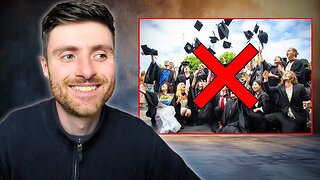 7:34
7:34
Michael Button
7 hours ago $0.01 earnedWhy I Left Academia to Explore Lost Civilizations
1332 -
 LIVE
LIVE
Sarah Westall
1 hour agoNEW STUDY RESULTS: Humans have MAC ID Chips – How Did They Get There? w/ Hazen and Mansfield
531 watching -
 2:03:53
2:03:53
Pop Culture Crisis
3 hours agoBillie Eilish & Sydney Sweeney Blamed For 'Whiteness', Millennials WORRIED About Gen Z | Ep. 887
18K10 -
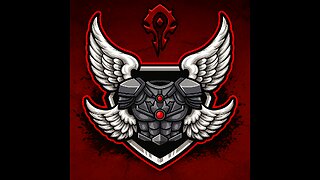
ZiggySalvation
2 hours agoCoD HC Time
1.7K -
 LIVE
LIVE
Spartan
2 hours agoSpartan - Pro Halo Player for OMiT | Scrims vs C9, Maybe Ranked after
84 watching -
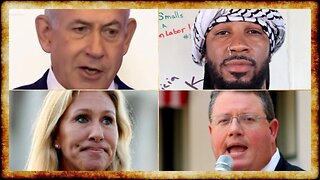 3:35:14
3:35:14
Due Dissidence
7 hours agoNetanyahu DENIES Gaza Starvation, Chris Smalls ASSAULTED in IDF Custody, MTG RIPS Randy Fine
6.01K9 -
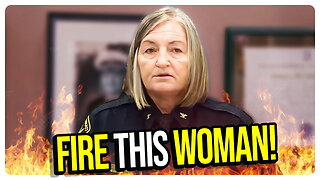 1:13:40
1:13:40
vivafrei
3 hours agoFire This Police Chief! Mass Shooting in New York! Sean Feucht Smoke Bomb Suspect ON VIDEO & MORE!
89K48 -
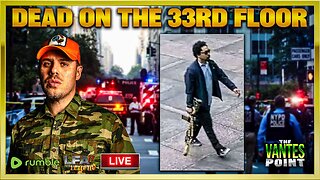 LIVE
LIVE
LFA TV
20 hours agoLFA TV ALL DAY STREAM - TUESDAY 7/29/25
1,388 watching -
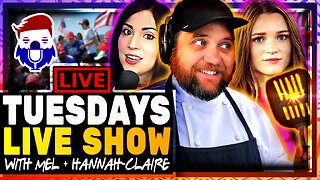 2:03:25
2:03:25
The Quartering
5 hours agoNYC Lunatic Update, Doxxing Website For Men OWNED, Walmart Stabber Update, 2 Men Buy Baby...
126K25 -
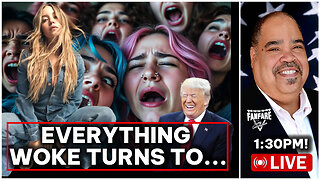 2:48:20
2:48:20
Barry Cunningham
5 hours agoSYDNEY SWEENEY PROVES PRESIDENT TRUMP IS RIGHT! EVERYTHING WOKE TURNS TO....
37.9K8